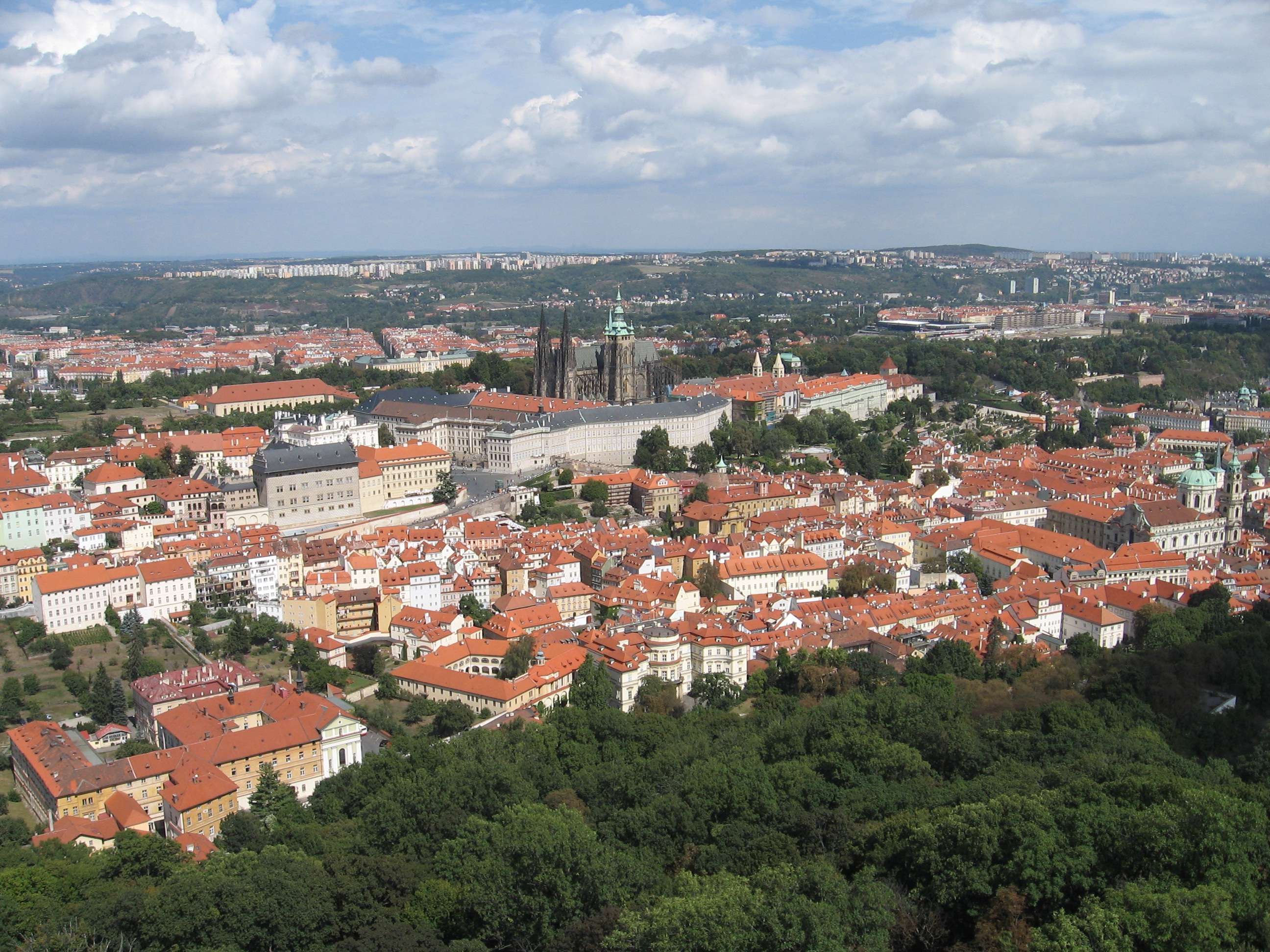Prague

Prague
is the capital and the largest city of the
Czech
Republic
. It’s situated in the centre of
Bohemia
, on Vltava/Moldau river and has a population of about 1.3 million
people.
According to legends,
Prague
was founded in 8th century by the legendary Duchess Libuše,
who was also a seer, and her peasant husband, Přemysl, founder of
the dynasty of the same name. The archeologists and historians confirm
a fortified settlement in the area of today’s
Prague
Castle
around the year 800 and a merchants’ settlement beneath
Prague
Castle
area in the second half of 9th century.
Prague
was the seat of Bohemian dukes, later kings of
Bohemia
, as well as the bishop (since 973). Since its beginnings, it has been
an important trade centre – merchants from
Eastern Europe
sold furs, amber and even slaves here, while those from the West and
South brought luxurious goods such as fabrics, jewelry or Southern
fruits.
The
historical centre of
Prague
is composed of four cities –
Prague
Castle
(Hradčany), Lesser Town (Malá
Strana),
Old
Town
(Staré Město) and New
Town (Nové Město).
While
Prague
Castle
and
Old
Town
grew rather spontaneously, the Lesser Town was founded in 1257 under
the rule of the perhaps mightiest king of the Přemysl Dynasty, Přemysl
Otakar (Ottokar) II. The founder of the New Town of Prague was
Bohemian King and Roman Emperor Charles IV, who was a grandson of the
last Přemysl king and most important member of the second royal
dynasty of
Bohemia
, the
Luxembourgs
.
Under
the rule of Charles IV,
Prague
received several of its most famous monuments – the king founded
Charles
University
, the oldest university to the East of Rhine and to the North of Alps
(1348),
Charles
Bridge
(1357) and St. Vitus Cathedral at
Prague
Castle
(1344). The built of the new cathedral in the modern Gothic style was
started in the same year when
Prague
was elevated to an archbishopric.
In
the years 1419-1436, the Bohemian religion wars brought a decline to
the whole
Kingdom
of
Bohemia
. The revival started only in the second half of 15th
century, under the rule of the kings of the Polish Jagiellon Dynasty.
During their reign, the famous Wladislaw Hall at
Prague
Castle
as well as other late Gothic monument were created.
In
1526, Ferdinand I of the House of Habsburg was elected to the new king
of
Bohemia
. Since then, the Habsburgs (with two short interruptions in 1618-1620
and 1740-1743) ruled the country till 1918.
The
reign of the House of Habsburg brought the recatholisation movement to
the country. In 16th century, the Jesuits settled down in
Prague
, in the area of today’s Klementinum (seat of the National Library
of the
Czech Republic
). In 17th century the order overtook the university. The
majority of churches in
Prague
were rebuilt in Baroque style in late 17th and 18th
century.
In
1618, the defenestration of
Prague
started the Thirty Years’ War. The Bohemian uprising against the
Catholic House of Habsburg was however defeated as soon as in the year
1620 in
the Battle of White Mountain by
Prague
. 27 leaders of the uprising were executed on
Old Town Square
in 1621 and many others took refuge in exile. The place of the
execution of 1621 is today marked by 27 white crosses in the pavement
of
Old Town Square
, just next to the tower of the
Old
Town
Town Hall
.
During
the Thirty Years’ War, the cities of
Prague
suffered several attacks by Saxons (1631) and Swedes (1648). The
Swedish army also took many of the treasures collected by the last
Habsburg king who took residence in
Prague
, Rudolf II, to
Sweden
.
The
war, a great fire (1689) and repeated outbreaks of plague and other
epidemics were a reason to a big decline in the population of
Prague
. At the end of the Thirty Years’ War there lived only about 20,000
people in the cities of
Prague
, while in 1618 the population was about 60,000. The population
increased again in 18th century – in 1771 the
municipalities of
Prague
had 80,000 inhabitants.
The
four municipalities of
Prague
were merged into one single city in 1784 under the rule of Joseph II.
Other municipalities, such as the Jewish quarter called Josefov or the
first suburbs (Karlín, founded in 1817) were included during 19th
century. At that time, the city of
Prague
was steadily growing due to the Industrial Revolution and creation of
many factories in
Prague
and the surrounding region.
In
1918, the independent
Czechoslovakia
was established.
Prague
became its capital and
Prague
Castle
seat of the president. Since 1993,
Prague
is the capital of
Czech
Republic
. In 1992, the historical centre of
Prague
was proclaimed a UNESCO World Heritage Site.
There
are numerous monuments in
Prague
. Especially recommended is the visit of Prague Castle Area (Prague
Castle including its gardens, St. Vitus Cathedral, Loreta and Strahov
Monastery), Lesser Town (St. Nicholas Church, palace gardens such as
Vrtbovská Garden or Wallenstein Garden, Wallenstein Palace, Church of
Our Lady Victorious with Infant Jesus of Prague wax statuette), Old
Town (Charles Bridge, former Jesuits’ college Klementinum, Charles
University historical seat Karolinum, Old Town Square with the Old
Town Town Hall and its Astronomical Clock, Obecní dům/Municipal
House, Jewish Town) and New Town (Wenceslas Square). Aside of the city
centre, the former fortress Vyšehrad and the local cemetery of famous
Czechs is well recommended for a visit.
|
